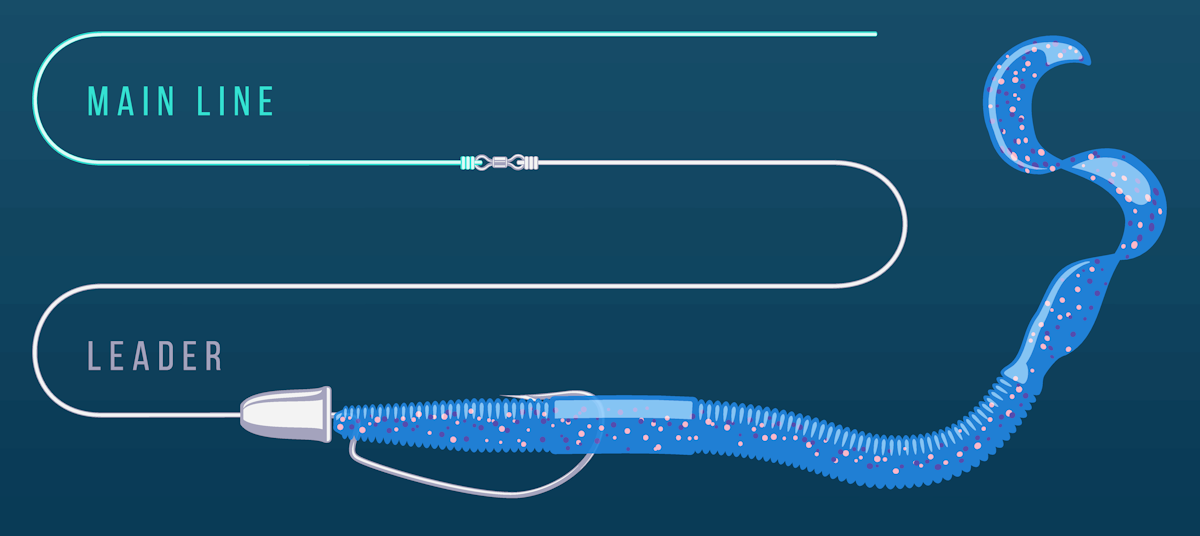Jul 21st 2023
Texas Rigs For Bass Fishing
The Texas rig, also known as the T-Rig, is one of the most popular and versatile setups for bass fishing. Because of its weedless design, the Texas rig can be fished in various types of structure and cover where other lures won’t work.
Below we outline what’s needed to make a Texas rig, how to assemble the T-rig and techniques used to fish it for bass in various situations.
What’s needed to make a Texas rig?
To make a Texas rig for bass fishing you are going to want to use a combination of the following tackle. Fishing line for Texas rigs: We like to use braided line when fishing cover to avoid breaking off. Bullet weight for Texas rigs: Select a bullet-shaped weight based on the depth and cover you'll be fishing.
Bullet weights for Texas rigs are offered in a variety of metals such as lead which is more cost effective and tungsten that is more expensive, but tougher and denser than its lead counterpart. Tungsten is often offered in a variety of colors so you can color match your weights and baits.

Fishing Hooks for Texas rigs.
There are 3 different types of hooks that can be utilized for Texas rigs; straight shank, offset round bend, and offset wide gap.
Straight shank hooks are great for Texas rigs when flipping and pitching through cover. Straight shank hooks allow your bait slides through heavy cover without hampering the action of the bait on the fall.
Offset round bend hooks are most people’s go-to hook for Texas rigs. This offset shank allows anglers to rig larger and bulkier soft plastics efficiently and effectively on the hook, all while providing space for the bait to rest below the hook’s eye instead of a traditional bait keeper.
Offset wide gap hooks are great for anglers using thicker, soft plastic baits since it allows the bait to get out of the way of a positive hookset. The downside to wide gap hooks is the barb is directly inline with the eye making it easier to lose fish.
Remember, the smaller the hook gap, the less room there is to lose a fish.
Soft plastic bait for Texas rigs.
Soft plastic worms, creature baits, or crawfish imitations are common choices for T-rigs. Select a bait that matches the prevailing conditions, such as the color, size, and action that bass are likely to respond to in your fishing area.
Leaders For Texas rigs.
While not a necessity, some anglers prefer to use leaders when fishing T-rigs. These can be made from mono or fluorocarbon and when made with a swivel can help keep your bullet weight from sliding up your line to far.
How to make a Texas Rig for bass fishing.
To assemble a Texas rig for bass fishing you’re going to want to follow the steps listed below. Keep in mind that the line diameter, hook, weight, and lure size will be determined by the conditions you are fishing and the rod you’ve selected to fish with. It’s always recommended you stay within the line and lure ratings for optimal rod performance.
1. Slide the bullet weight onto the fishing line. The pointed end should be facing the rod tip, while the wider end should rest against a bullet weight stopper or a pegged plastic bead.
2. Tie the offset worm hook to the end of the line using a suitable fishing knot like the Palomar knot or improved clinch knot.
3. Select your soft plastic bait. As mentioned above, worms, creature baits, and crawfish imitations are common baits for Texas rigs.
4. Insert the point of the hook into the head of the soft plastic bait and slide it along the hook's shank until it reaches the bend. Rotate the hook so the point is embedded into the body of the bait but remains hidden, creating a weedless presentation. Ensure the bait is straight and aligned with the hook, allowing it to move naturally in the water.
Techniques and how to fish a Texas rig for bass.
Cast your Texas rig into the potential bass-holding areas such as submerged vegetation, rocky structures, laydowns, or docks. Allow the rig to sink to the desired depth before retrieving. The rate of sinking can be controlled by the weight size.
After the bait settles, create action by twitching the rod tip, dragging the rig along the bottom, or employing a slow and steady retrieve. Pay attention to any bites or subtle movements indicating a bass has taken the bait. When you feel a strike, set the hook with a swift upward motion of the rod. Remember to experiment with different retrieves, speeds, and bait colors to find what works best on a given day.
Top 5 Fishing rods for Texas rigs.
- Original Series 6'9" Medium Heavy Fast Casting Rod
- Original Series 7' Heavy Casting Rod
- Original Series 7' Medium Heavy Spinning Rod
- ENERGY Series 7'2" Med/Heavy Casting Rod
- ENERGY Series 7'6" Heavy Casting Rod
Bass behavior can vary, so adapt your technique accordingly.
Tight lines and happy fishing.

